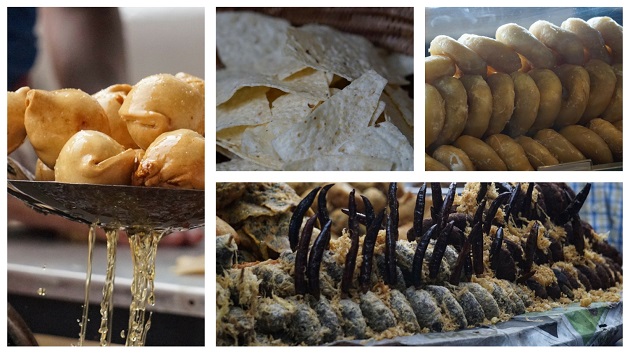
Chawk Bazar of Old Dhaka is known as an Iftar Market among the people of Bangladesh. It is the largest Iftar Market in Dhaka. A wide variety of foods including suti kebab, jilapi, parata, chola bhuna, roast mutton, piaju, egg-chop, vegetable pakora, doi bora, pizzas and burgers are sold along the road in front of Shahi Masjid in Chawk Bazar. The food stalls are an explosion of exotic colors and scents. The smell and the appearance of the food can be quite irresistible and tempting, however, most of these are high in fat and are an unhealthy contribution to the daily diet.
It is important to be aware of the type and the quantity of the food consumed during Ramadan. Some of the foods that are among the least healthy are the high starch food as well as the fried foods. The fried foods can contain high-levels of unhealthy fats.
Saturated fatty acids and trans-fatty acids (also known as trans fat) increase the risk of cardiovascular disease (heart attacks and strokes). Saturated fats are the type of fats that are solid at room temperature. They can be found in red meat, dairy products, and also some vegetable oil including coconut oil, palm oil as well as cocoa butter. Trans-fats are semi-solid at room temperature and are often produced industrially. They can be found in processed foods including baked products (biscuits, pastries, cake) pre-packaged snacks, fried street and restaurant foods, and in margarine and vegetable shortening which contain partially hydrogenated oils.
WHO recommends that the healthy intake of fats should be less than 30% of the total energy intake or between 65 gram to 80 gram from fats where saturated fats should contribute up to 10% of total energy intake or between 20 gram to 25 gram1, and trans-fat should be less than 1% of total energy intake or 2 grams on a daily basis.2
Here are some practical tips to reduce the intake of saturated fats and trans fat during the fast of Ramadan:
- Reduce consumption of deep fried foods such as fried piaju, fried beguni, jilapi and fried shinggara;
- Limit processed and packaged baked foods such as biscuits, pastries, cakes and doughnut;
- Avoid vanaspati ghee and foods made with vanaspati ghee and vegetable shortening;
- Eat fish and lean cuts of meat;
- Replace deep-frying cooking with grilling or baking;
- Reduce the usage of oil in curry.
Reference:
- 1United States Department of Agriculture.2000. Nutrition and Your Health: Dietary Guidelines for Americans. Page 30
- 2Bangladesh Institute of Research and Rehabilitation in Diabetes, Endocrine and Metabolic Disorder (BIRDEM). June, 2013. Dietary Guidelines for Bangladesh. Page 15
